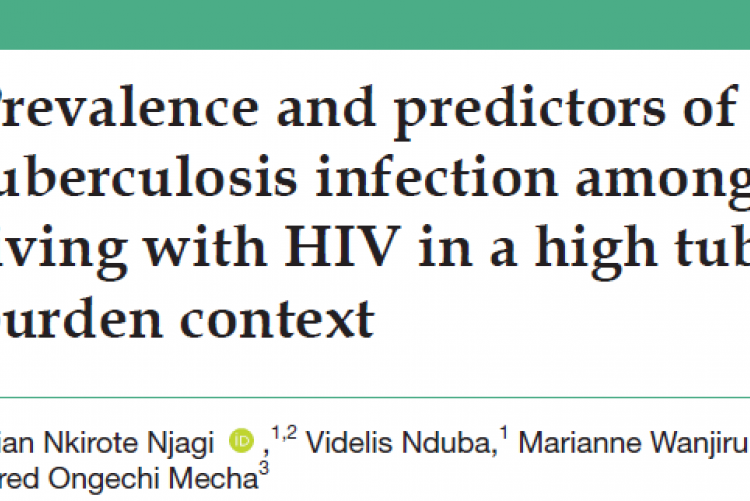A recent publication in the "BMJ Open Respiratory Research", penned by Lilian Nkirote Njagi, Videlis Nduba, Marianne Wanjiru Mureithi, and Jared Ongechi Mecha, offers valuable insights into the complex relationship between HIV and tuberculosis (TB) infection. Dr. Lilian Najgi is a PhD Scholar in the Department of Medical Microbiology and Immunology.
The Scope of the Problem
Despite progress in the fight against TB, it remains the leading cause of mortality among people living with HIV (PLHIV). These deaths are often preventable with early detection and proper care. What further complicates the matter is that the prevalence of TB infection among PLHIV, within a context of near-universal access to antiretroviral therapy (ART) and TB preventive therapy (TPT), has not been fully understood.
Methods Used in the Study
The authors sought to rectify this gap through a cross-sectional study examining adult PLHIV who were 18 years or older. To determine the prevalence of TB infection, the QuantiFERON-TB Gold Plus (QFT-Plus) assay, an Interferon-gamma release assay (IGRA), was performed. The study defined TB infection as a positive or indeterminate QFT-Plus test. Notably, participants already diagnosed with TB or previously used TPT were excluded from the study, ensuring these factors did not skew the results.
Key Findings and Implications
While the paper does not provide a detailed breakdown of the findings, the authors suggest that the study's results offer significant insights into the prevalence and determinants of TB infection among PLHIV. The outcome of this study holds the potential to inform clinical practices and public health policy within high TB and HIV burden contexts.
The study's innovative use of regression analysis could also identify independent predictors of TB infection, thus opening avenues for early detection and preventative care. Identifying these predictors can enable health systems to target vulnerable populations more effectively, potentially leading to improved TB prevention, care, and control strategies.
In conclusion, this recent publication offers a novel perspective on the intricate interplay between TB and HIV, specifically within high-burden contexts. Further research based on these findings could significantly contribute to combating both diseases globally.
It is also worth noting that the publication, while undoubtedly shedding new light on a long-standing issue, also underscores the urgent need for further studies in the same field. The intersection of TB and HIV remains a complex issue that demands continued investigation if we are to fully understand its depth and develop effective interventions.
This article is based on the research paper titled "Prevalence and predictors of tuberculosis infection among people living with HIV in a high tuberculosis burden context", published in the BMJ Open Respiratory Research Journal, Volume 10, Issue 1. The paper is freely accessible for those interested in delving into the details of the study and its findings.
- Log in to post comments

